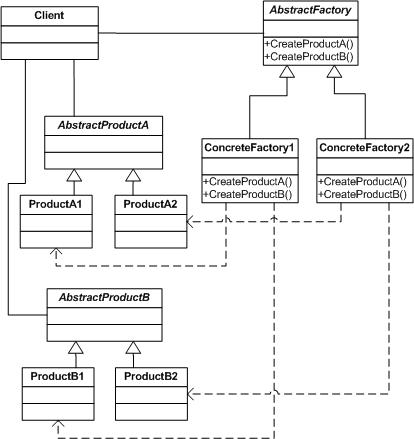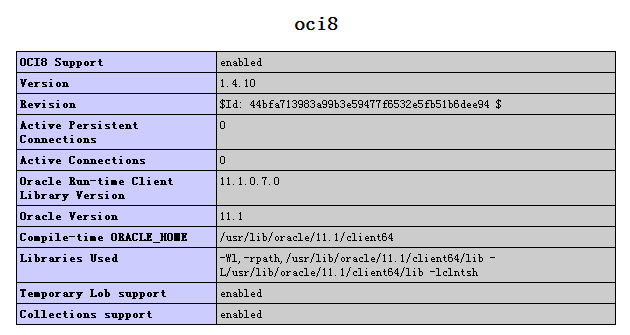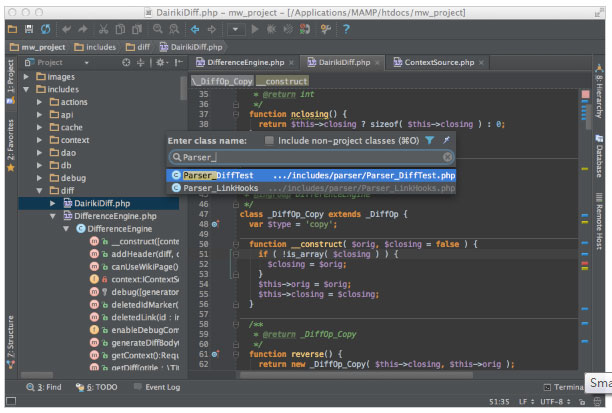|
|
首先來(lái)看下流程:
流程原理:
1.通過(guò)code獲得access_token通過(guò)授權(quán),并獲取用戶(hù)的信息(包括用戶(hù)u_id)(這個(gè)u_id在后面的第三方登錄表里面叫sina_id,那個(gè)表是需要自己建的)
2.查詢(xún)第三方登錄表,如果不存在用戶(hù)sina_id,分2種情況,一:用戶(hù)在平臺(tái)已經(jīng)有帳號(hào),這時(shí)需要把平臺(tái)(比如:平臺(tái)的用戶(hù)表是:user_reg)用戶(hù)id綁定到第三方登錄表(比如是:third_login表),然后就讓客戶(hù)登錄;
二:用戶(hù)在平臺(tái)沒(méi)有帳號(hào),跳轉(zhuǎn)至注冊(cè)頁(yè)面注冊(cè),注冊(cè)的同時(shí),信息寫(xiě)入uer_reg表,同時(shí)也把用戶(hù)sina_id寫(xiě)入第三方登錄表進(jìn)行綁定;
3.查詢(xún)第三方登錄表(third_login),如果存在用戶(hù)sina_id,再查詢(xún)用戶(hù)表(user_reg),如果郵箱已經(jīng)激活,就直接登錄,如果沒(méi)有激活,提示用戶(hù)去郵箱激活帳號(hào)。
下面開(kāi)始詳講步驟:
第一步:申請(qǐng)App key和App secret申請(qǐng)地址:http://open.weibo.com/ 在頁(yè)面點(diǎn)擊網(wǎng)站接入WEB,進(jìn)去申請(qǐng)就好了,通過(guò)后會(huì)得到App Key 和 App Secret如下:
App Key:1428003339
App Sercet:f1c6177a38b39f764c76a1690720a6dc
回調(diào)地址:http://test.com/callback.php
說(shuō)明:申請(qǐng)下來(lái)后,那你的這個(gè)新浪帳號(hào)就是測(cè)試帳號(hào),你在開(kāi)發(fā)的時(shí)候可以用這個(gè)帳號(hào)來(lái)調(diào)試,其他帳號(hào)是無(wú)法登錄,無(wú)法返回信息的。開(kāi)發(fā)前,最好上官網(wǎng)看下開(kāi)發(fā)流程,流程是最重要的。只要思路理清楚了,剩下就是用代碼實(shí)現(xiàn)你的所思所想。
第二步:下載SDK,下載php版的,下載地址(官網(wǎng)):http://code.google.com/p/libweibo/downloads/list,下載下來(lái)有5個(gè)文件,其中一個(gè)是saetv2.ex.class.php,我只需要這個(gè)文件。
第三步:代碼
1.建立一個(gè)第三方登錄表,以便存儲(chǔ)第三方登錄的信息(新浪是u_id,QQ是openid,他們都是唯一的,用來(lái)標(biāo)識(shí)用戶(hù),我們根據(jù)這個(gè)來(lái)存儲(chǔ)):
復(fù)制代碼 代碼如下:
CREATE TABLE IF NOT EXISTS `third_login` (
`user_id` INT(6) NOT NULL,
`sina_id` BIGINT(16) NULL,
`qq_id` varchar(64) NULL,
PRIMARY KEY (`user_id`),
UNIQUE INDEX `user_id_UNIQUE` (`user_id` ASC),
INDEX `sina_id` (`sina_id` ASC),
INDEX `index4` (`qq_id` ASC))
ENGINE = MyISAM
DEFAULT CHARACTER SET = utf8
COLLATE = utf8_bin
COMMENT = '第三方登錄表'
說(shuō)明:平臺(tái)返回的是u_id,他是用戶(hù)的唯一標(biāo)識(shí),我把他存為sina_id,user_id是關(guān)聯(lián)平臺(tái)用戶(hù)表user_reg的id的,user_reg表我這里不列出,你可以按實(shí)際項(xiàng)目需求來(lái)建表,推薦的操作工具有phpmyadmin,MySQL Workbench,操作方便。
如果你只需要做新浪登錄接口,那可以把qq_id這個(gè)字段去掉。
2.寫(xiě)配置文件,在application下新建一個(gè)文件sina_conf.php,把剛申請(qǐng)到的App Key 和 App Secret寫(xiě)進(jìn)去,代碼如下:
復(fù)制代碼 代碼如下:
<?php
$config["sina_conf"] = array(
"App_Key" => '1428003339',
"App_Secret" =>'f1c6177a38b39f764c76a1690720a6dc',
"WB_CALLBACK_URL" => 'http://test.com/callback.php'
);
保存
3.oauth認(rèn)證類(lèi),把剛下載下來(lái)的saetv2.ex.class.php文件復(fù)制到application/libraries下。
說(shuō)明:這是非常重要的類(lèi),登錄,授權(quán),獲取用戶(hù)信息都要用到這個(gè)類(lèi)中的方法,沒(méi)他就沒(méi)法玩下去了,原封不動(dòng)的粘到application/libraries下。
4.寫(xiě)新浪微博登錄類(lèi)(QQ登錄也可用,我這里QQ登錄的也封裝在一起了,就算只做新浪登錄接口,也不影響),在application/models下建一個(gè)文件third_login_model.php,代碼:
復(fù)制代碼 代碼如下:
<?php
/**
* Description of third_login_model
*第三方接口授權(quán),登錄model
* @author
*/
class third_login_model extends CI_Model{
//put your code here
private $sina=array();
private $qq =array();
private $users ='';
private $third='';
public function __construct() {
parent::__construct();
// $this->l = DIRECTORY_SEPARATOR;
$this->load->database();
$this->load->library('session');
include_once APPPATH."/libraries"."/saetv2.ex.class.php";
$this->third = $this->db->'third_login';//第三方登錄表
$this->users = $this->db->'user_reg';//本項(xiàng)目用戶(hù)表
$this->config->load("sina_conf");
$this->sina= $this->config->item("sina_conf");
}
/**
* @uses : 新浪微博登錄
* @param :
* @return : $sina_url----登錄地址
*/
public function sina_login(){
$obj = new SaeTOAuthV2($this->sina['App_Key'],$this->sina['App_Secret']);
$sina_url = $obj->getAuthorizeURL( $this->sina['WB_CALLBACK_URL'] );
return $sina_url;
}
/**
* @uses : 登錄后,通過(guò)返回的code值,獲取token,實(shí)現(xiàn)授權(quán)完成,然后獲取用戶(hù)信息
* @param : $code
* @return : $user_message--用戶(hù)信息
*/
public function sina_callback($code){
$obj = new SaeTOAuthV2($this->sina['App_Key'],$this->sina['App_Secret']);
if (isset($code)) {
$keys = array();
$keys['code'] = $code;
$keys['redirect_uri'] = $this->sina['WB_CALLBACK_URL'];
try {
$token = $obj->getAccessToken( 'code', $keys ) ;//完成授權(quán)
} catch (OAuthException $e) {
}
}
$c = new SaeTClientV2($this->sina['App_Key'], $this->sina['App_Secret'], $token['access_token']);
$ms =$c->home_timeline();
$uid_get = $c->get_uid();//獲取u_id
$uid = $uid_get['uid'];
$user_message = $c->show_user_by_id($uid);//獲取用戶(hù)信息
return $user_message;
}
/**
* @uses : 查詢(xún)第三方登錄表
* @param : $where
* @return : 第三方登錄用戶(hù)記錄結(jié)果集
*/
public function select_third($where) {
$result = false;
$this->db->select();
$this->db->from($this->third);
$this->db->where($where);
$query = $this->db->get();
if($query){
$result = $query->row_array();
}
return $result;
}
/*-
* @uses : sina---查詢(xún)用戶(hù)表和第三方登錄表
* @param : $where
* @return : 第三方登錄用戶(hù)記錄結(jié)果集
*/
public function select_user_name($where) {
$field ="user.id,user.password,user.username,utl.*";
$sql = "select {$field} from {$this->third} as utl "
." left join {$this->users} as user on user.id=utl.user_id"
. " where utl.sina_id={$where}";
$query = $this->db->query($sql);
$result = $query->row_array();
return $result;
}
/**
* @uses : qq---查詢(xún)用戶(hù)表和第三方登錄表
* @param : $where
* @return : 第三方登錄用戶(hù)記錄結(jié)果集
*/
public function select_user_qqname($where) {
$field ="user.id,user.password,user.username,utl.*";
$sql = "select {$field} from {$this->third} as utl "
." left join {$this->users} as user on user.id=utl.user_id"
. " where utl.qq_id='{$where}'";
$query = $this->db->query($sql);
$result = $query->row_array();
return $result;
}
/**
* @uses : 將用戶(hù)和第三方登錄表信息綁定
* @param : $datas
* @return :
*/
public function binding_third($datas) {
if (!is_array($datas)) show_error ('wrong param');
if($datas['sina_id']==0 && $datas['qq_id']==0) return;
$resa ='';
$resb ='';
$resa = $this->select_third(array("user_id"=>$datas['user_id']));
$temp =array(
"user_id"=>$datas['user_id'],
"sina_id"=>$resa['sina_id']!=0 ? $resa['sina_id'] : $datas['sina_id'],
"qq_id" => $resa['qq_id']!=0 ? $resa['qq_id'] : $datas['qq_id'],
);
if($resa){
$resb = $this->db->update($this->third, $temp,array("user_id"=>$datas['user_id']));
}else{
$resb = $this->db->insert($this->third,$temp);
}
if($resb) {
$this->session->unset_userdata('sina_id');//注銷(xiāo)
$this->session->unset_userdata('qq_id');//注銷(xiāo)
}
return $resb;
}
}
保存
說(shuō)明:這個(gè)code是由入口文件callback.php傳過(guò)來(lái)的,第7步會(huì)有他的詳細(xì)代碼。
現(xiàn)在配置文件,model,數(shù)據(jù)表都有了,接下來(lái)就是控制器和視圖文件了。
5.寫(xiě)登錄控制器 在application/controllers下,建立login.php文件(名字你可以自己取),代碼:
復(fù)制代碼 代碼如下:
<?php if ( ! defined('BASEPATH')) exit('No direct script access allowed');
/**
* Description of index
* @author victory
*/
class Login extends CI_Controller {
public function __construct() {
parent::__construct();
$this->load->model('login_model','login');//這個(gè)類(lèi)是本項(xiàng)目的用戶(hù)登錄類(lèi),本貼不提供原代碼,因?yàn)椴煌捻?xiàng)目,需求不同,可根據(jù)你項(xiàng)目需求可以自己封裝
$this->load->model("third_login_model","third");
$this->load->library('session');
}
public function index() {
header("content-type: text/html; charset=utf-8");
$this->load->model("third_login_model","third");//加載新浪登錄接口類(lèi)
$datas['sina_url'] = $this->third->sina_login();//調(diào)用類(lèi)中的sina_login方法
$this->load->view("index.php",$datas);//調(diào)取視圖文件,并傳入數(shù)據(jù)
}
public function callback(){
header("content-type: text/html; charset=utf-8");
$this->load->model("user_reg_model","user_reg");
$code = $_REQUEST['code'];//code值由入口文件callback.php傳過(guò)來(lái)
$arr =array();
$arr = $this->third->sina_callback($code);//通過(guò)授權(quán)并獲取用戶(hù)信息(包括u_id)
$res = $this->third->select_third(array("sina_id"=>$arr['id']));
if(!empty($res)){//用戶(hù)已有帳號(hào)記錄,先判斷帳號(hào)是否激活
$user_info = $this->user_reg->user_detect(array("id"=>$res['user_id']));//查詢(xún)用戶(hù)表郵箱狀態(tài),user_detect方法就是查詢(xún)用戶(hù)信息的方法,上面也說(shuō)了,login_model.php這個(gè)類(lèi)本貼不提供,需要大家自己去封裝。
if($user_info['status']){//根據(jù)status的狀態(tài)判斷用戶(hù)帳號(hào)是否激活,user_reg表中的字段status,1為未激活,0為已激活
echo "<script>alert('您的賬號(hào)未激活,請(qǐng)去郵箱激活!');location='/login/index';</script>";die();
}
$datas = $this->third->select_user_name($arr['id']);//激活后,把信息寫(xiě)入用戶(hù)表和第三方登錄表
$uname = $datas['username'];//username,password都是user_reg表的字段,user_reg數(shù)據(jù)表的構(gòu)建本帖也不提供,因?yàn)槊總€(gè)項(xiàng)目都不一樣,需要根據(jù)實(shí)際項(xiàng)目來(lái)
$password = $datas['password'];
$this->load->model("login_model","login");
$this->login->validation($uname,$password);//validation方法是登錄的主要方法,這里主要是在登錄的時(shí)候,將用戶(hù)信息寫(xiě)入第三方登錄表,下面僅提供寫(xiě)入第三方登錄表的代碼
echo "<script>alert('登錄成功!');location='/user_center'</script>";die();
}else{//用戶(hù)第三方表沒(méi)有記錄,詢(xún)問(wèn)用戶(hù)是否在平臺(tái)有過(guò)帳號(hào),沒(méi)有跳轉(zhuǎn)注冊(cè),有跳轉(zhuǎn)登錄
$this->session->set_userdata('sina_id',$arr['id']);
echo "<script>if(!confirm('是否在平臺(tái)注冊(cè)過(guò)用戶(hù)?')){location='/register/index'}else{location='/login'};</script>";
}
}
public function login_validation(){
//第三方登錄用戶(hù)id ,sina_id,qq_id的記錄增改
$third_info =array(
"user_id" => $user_ser['id'],
"sina_id" => $this->session->userdata('sina_id'),
"qq_id" =>$this->session->userdata('qq_id'),
);
if($third_info['sina_id']||$third_info['qq_id']) $this->third->binding_third($third_info); // 綁定
}
//保存
//在注冊(cè)控制器里,用戶(hù)信息寫(xiě)入user_reg表,同時(shí)也把sina_id寫(xiě)入third_login表,我這里只展示第三方登錄接口用戶(hù)id存入數(shù)據(jù)表的代碼
class Register extends CI_Controller {
public function __construct() {
parent::__construct();
$this->load->library('session');
}
public function reg() {
$haha =array(
"user_id" => $rs,
"sina_id" => $this->session->userdata('sina_id'),
"qq_id" =>$this->session->userdata('qq_id'),
);
if($haha['sina_id']||$haha['qq_id']) $this->third->binding_third($haha);
}
}
保存
6.視圖文件布置新浪微博登錄按鈕,在application/view下建立index.php文件,代碼:
復(fù)制代碼 代碼如下:
<html>
<head>
<meta content="text/html; charset=utf-8">
<title>新浪微博登錄接口</title>
</head>
<body>
<div><a href="<?=$sina_url?>"><img src="http://images.cnblogs.com/weibo_login.png" width="110" /></a></div>
</body>
</html>
保存
說(shuō)明:這是個(gè)圖片按鈕,圖片你可在官網(wǎng)下載,下載地址:http://open.weibo.com/widget/loginbutton.php
7.回調(diào)地址
前面在第1步配置文件文件的時(shí)候,設(shè)置了回調(diào)地址:http://test.com/callback.php ,那這個(gè)callback.php放在什么地方呢,它需要放在和入口index.php同級(jí)的位置,它和application也是同級(jí)的。所在在開(kāi)始的目錄下新建文件callback.php。代碼:
復(fù)制代碼 代碼如下:
<?php
/*
* To change this license header, choose License Headers in Project Properties.
* To change this template file, choose Tools | Templates
* and open the template in the editor.
*/
//新浪微博登錄回調(diào)入口文件,將路徑轉(zhuǎn)移到login/callback方法里,并將code值傳過(guò)去
$code ='';
$url = '';
$str ='';
$code = $_REQUEST['code'];
$url = "/login/callback";
$str = "<!doctype html>
<html>
<head>
<meta charset=/"UTF-8/">
<title>自動(dòng)跳轉(zhuǎn)</title>
</head>
<body>";
$str .="<form action=/"{$url}/" method=/"post/" id=/"form/" autocomplete='off'>";
$str .="<input type='hidden' name='code' value='{$code}'>";
$str .="</form>
</body>
</html>
<script type=/"text/Javascript/">
document.getElementById('form').submit();
</script>";
echo $str;
保存
這個(gè)時(shí)候,你用瀏覽器訪問(wèn)index.php文件的時(shí)候,會(huì)看到一個(gè)用微博帳號(hào)登錄的登錄按鈕,點(diǎn)擊按鈕,會(huì)跳轉(zhuǎn)到微博登錄頁(yè)面,要你輸入新浪微博用戶(hù)名密碼,他會(huì)做不同的操作。具體流程我在上面也說(shuō)過(guò)了。
php技術(shù):CI框架開(kāi)發(fā)新浪微博登錄接口源碼完整版,轉(zhuǎn)載需保留來(lái)源!
鄭重聲明:本文版權(quán)歸原作者所有,轉(zhuǎn)載文章僅為傳播更多信息之目的,如作者信息標(biāo)記有誤,請(qǐng)第一時(shí)間聯(lián)系我們修改或刪除,多謝。



